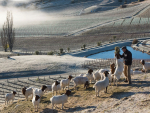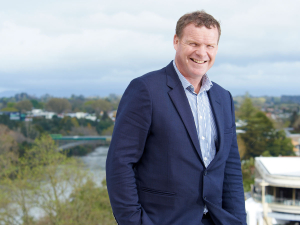LAST WEEK’S meeting in Dannevirke about the impacts of One Plan on dairy farmers was scary for a number of reasons.
The presenters at the event showed that 30% of dairy farmers in the Tararua district could be in serious trouble, that $60 million could be wiped off dairy farmers’ incomes and that at least 300 jobs could be lost if something isn’t done soon. They predicted a trickle-down effect on the local community.
The perpetrators of One Plan – Horizons Regional Council – are in a right old pickle. Their latest cries are that it’s the fault of the Environment Court for the plan they now have, that farmers “misunderstand them” and that they should “trust” them. Interestingly the Tui brewery with its ‘yeah right’ bill boards is based in that district. From last week’s meeting they could make at least three more new billboards.
Horizons is now scrambling around offering discretionary resource consents as a way of mitigating the effects of its plan. We’ve been told 90% of farms in the district will need these, making a mockery of the word ‘discretion’. 10% yes; 90% – yeah right!
The Tararua community is now caught in a time warp of uncertainty and that is leading to stress. It’s a fact that more suicides occur in rural than urban areas. Right now farmers in many parts of the country are in a fragile state as a result of the drought. One Plan is adding to that stress.
Given these latest revelations it’s clear the time has come for the government to do what they did in Canterbury: sack the council, appoint commissioners and put in place a sensible plan, such as the original decision plan with no appeal rights. This will give certainty, stop the temporary solutions and most importantly remove the stress from farmers. Unless they act immediately lives could be at risk, not to mention the economic viability of an important primary producing region of the country.
At the moment it could be argued One Plan favours a lot of exotic and a few native fish in the region’s rivers ahead of hard-working stressed farmers.

















